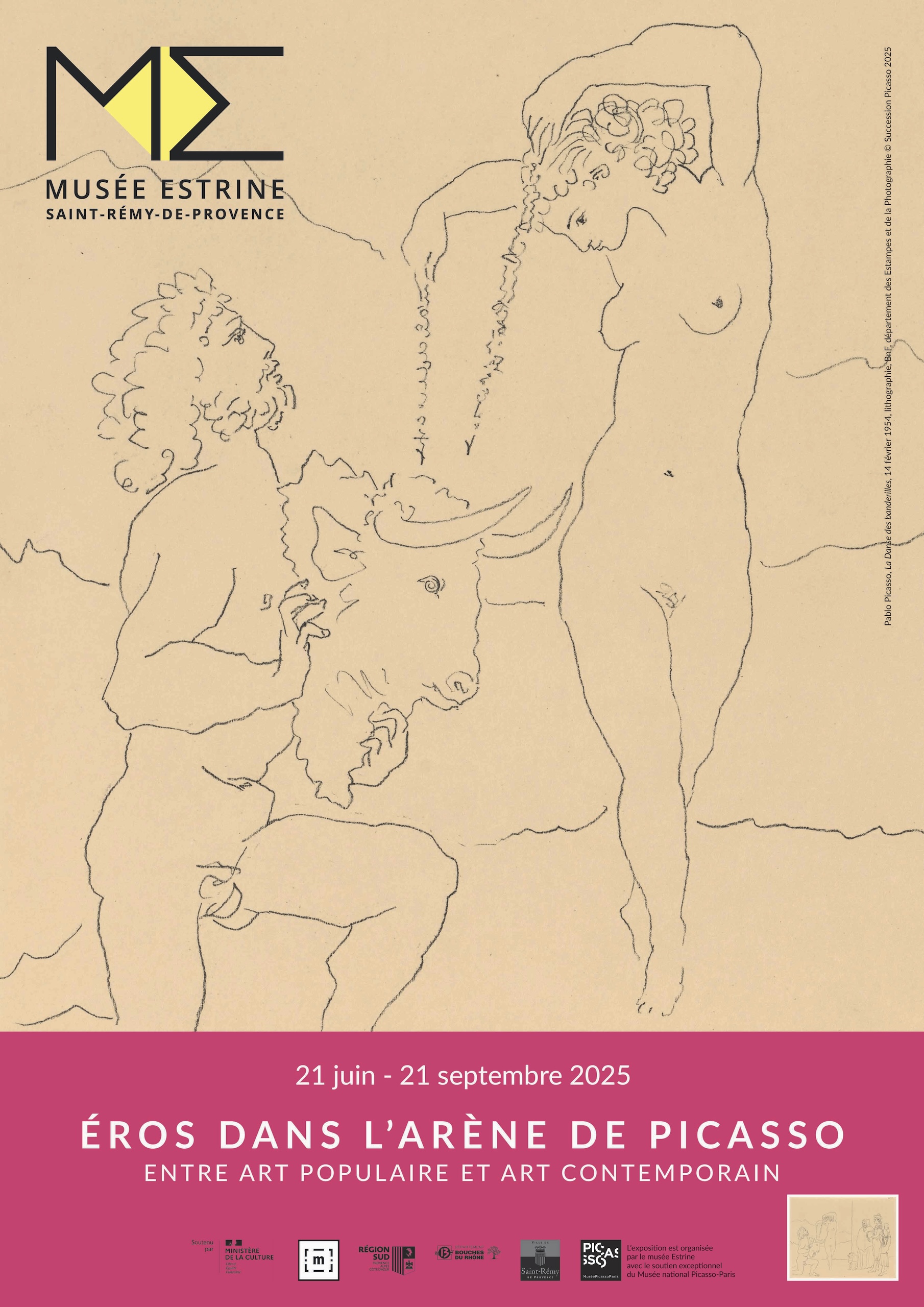STARS, TOROS Y TOREROS
Since the Lumière brothers, the filmed image has forged links with bullfighting, a volatile art form that it enables us to capture and disseminate.The first of the vamps, Musidora, filmed Sol y Sombra in 1922, in which she seduces the bullfighter and confronts a small bull.The matador, thus adorned with a media aura, gradually became one of the heroes of the age. In the 1950s, bullfighting opened up to a wide media and cultural arena. Richard Thorpe’s Señorita toreador (1947), Budd Boetticher’s La femme et le toreador and Albert Lewin’s Pandora, both released in 1951, were international successes, and some of them became bullfighters themselves, subverting the image of women as passive seducers. Their sex appeal goes hand in hand with the courage symbolized by the garb of lights they don’t hesitate to don. In a video clip for DIM stockings, for example, Jean-Paul Goude hijacks the Picasso universe by imposing the image of a powerful, sensual torera. The archetypal seductive matador was Luis Miguel Dominguín, lover of many stars, including the most famous of them all, Ava Gardner. Overcoming his intransigent anti-Franco stance, Picasso was seduced by this Apollo of the arena, a familiar face of the hated dictator, to the point of making him his close friend and inviting him to write a text that he would illustrate, Toros y Toreros (1961).
STARS, TOROS Y TOREROS
Seit den Gebrüdern Lumière hat das Filmbild eine Verbindung zum Stierkampf, einer flüchtigen Kunst, die es ermöglicht, sie festzuhalten und zu verbreiten. Die erste der Vamps, Musidora, drehte 1922 Sol y Sombra, wo sie den Torero-Darsteller verführt und gegen einen kleinen Stier antritt. Der so mit einer Medienaura ausgestattete Matador wird nach und nach in die Riege der Helden dieser Zeit aufgenommen. In den 1950er Jahren öffnete sich der Stierkampf einem breiten medialen und kulturellen Raum. Richard Thorpes Señorita toreador (1947), Budd Boettichers The Woman and the toreador und Albert Lewins Pandora (beide 1951) wurden zu internationalen Erfolgen, und einige von ihnen wurden selbst zu Stierkämpfern und untergruben das Bild der Frau, die bis dahin nur passiv verführt worden war. Ihr Sexappeal geht Hand in Hand mit ihrem Mut, der durch das Lichtgewand symbolisiert wird, in das sie sich ohne zu zögern kleiden. So verdreht Jean-Paul Goude in einem Clip für die DIM-Strümpfe die Welt des Picasso, indem er das Bild einer starken und sinnlichen Stierkämpferin aufzwingt. Der Archetyp des verführerischen Matadors war Luis Miguel Dominguín, ein bekannter Liebhaber vieler Stars, darunter auch die berühmteste Stierkämpferin Ava Gardner. Picasso, der sich über seinen kompromisslosen Anti-Franquismus hinwegsetzte, war von diesem Apollo der Arena, der mit dem geschassten Diktator vertraut war, so angetan, dass er ihn zu seinem engen Freund machte und ihn einlud, einen Text zu schreiben, den er illustrierte, Toros y Toreros (1961).
ESTRELLAS, TOROS Y TOREROS
Desde los hermanos Lumière, la imagen filmada ha estado ligada a la tauromaquia, arte volátil que permite captar y difundir. La primera de las vampiresas, Musidora, filmó en 1922 Sol y Sombra, en la que seduce al torero-actor y se enfrenta a un pequeño toro. El matador, adornado así con un aura mediática, se convirtió poco a poco en uno de los héroes de la época. En los años 50, la tauromaquia se abre a una amplia esfera mediática y cultural. Señorita toreador (1947), de Richard Thorpe, La mujer y el torero, de Budd Boetticher, y Pandora, de Albert Lewin, ambas estrenadas en 1951, fueron éxitos internacionales, y algunas mujeres se convirtieron ellas mismas en toreras, subvirtiendo la imagen de la mujer como seductora pasiva. Su atractivo sexual iba de la mano de la valentía simbolizada por el atuendo de luces que no temían ponerse. En un clip realizado para las medias DIM, Jean-Paul Goude secuestra el universo picassiano imponiendo la imagen de una torera poderosa y sensual. El arquetipo del torero seductor era Luis Miguel Dominguín, amante de muchas estrellas, entre ellas la más famosa de todas, Ava Gardner. Superando su intransigente postura antifranquista, Picasso se dejó seducir por este Apolo de la plaza de toros, rostro familiar del vilipendiado dictador, hasta el punto de hacerle su íntimo amigo e invitarle a escribir un texto que él ilustraría, Toros y Toreros (1961).
